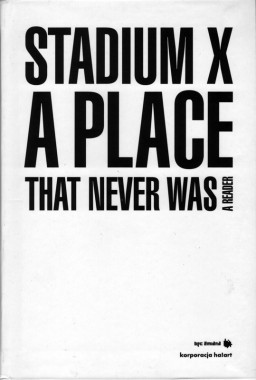Stadium X — A Place That Never Was
Joanna Warsza, Stadium X — A Place That Never Was
Softcover, 128 pp., offset 4/1, 135 x 195 mm
Edition of 500
ISBN 978-83-925107-6-5
Published by Laura Palmer Foundation
$20.00 ·
The Stadium was built in 1955 from the rubble of a war-devastated, and was to preserve Communism’s good name for forty years. In the early 1990s it fell into ruin, being at the same time ‘revived’ by Vietnamese intelligentsia-cum-vendors and Russian traders, pioneers of capitalism. Jarmark Europa suddenly became the only multicultural site in the city, a storehouse of biographies and urban legends, as well as a major tourist attraction. The heterotopic logic of the place and its long-standing (non)presence in the middle of Warsaw brought about the series of art projects, and later this reader.
Over the course of time, the 10-th Anniversary Stadium which is now being erased form the map of Warsaw will likely become some distant planet, while the present publication, with the brilliant contributions from its authors, will attain — perhaps — the status of an unreal story about a place that, after all, never was.
—Daniel Miller, Frieze
Anda Rot ten berg, Art, Bar bara Sudnik-Wójcikowska, Ben jamin Cope, Cezary Polak, Claire Bishop, Criticism, Culture, Distribution, Ewa Majew ska, Grze gorz Piątek, Halina Galera, Joanna Warsza, Laura Palmer Foundation, Marek Ostrowski, Ngô Văn Tưởng, Pascal Nicolas-Le Strat, Pit Schultz, Roland Schöny, Sebas t ian Cichocki, Sport, Stach Szabłowski, Theory, Tomasz Stawiszyński, Warren Niesłuchowski
